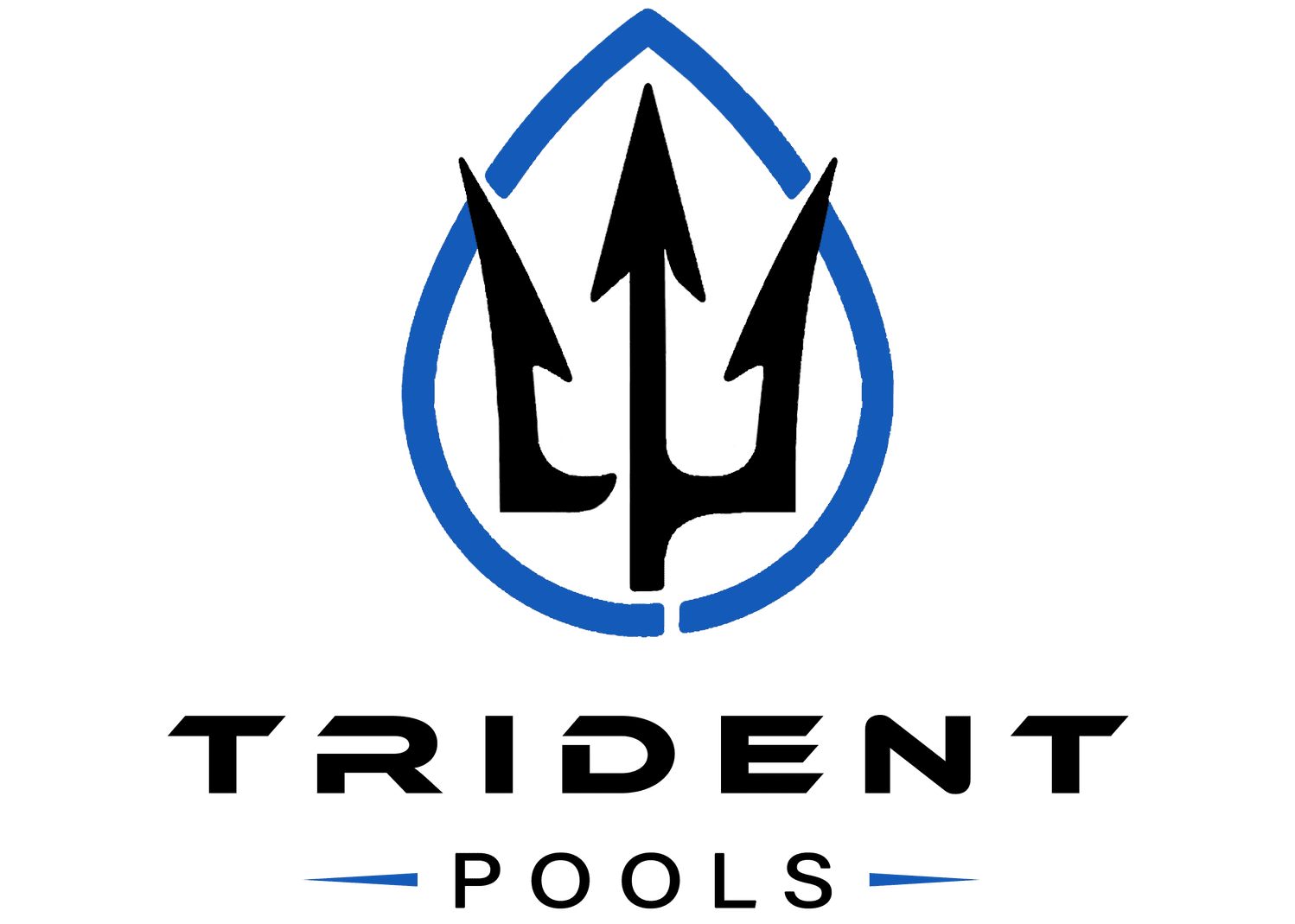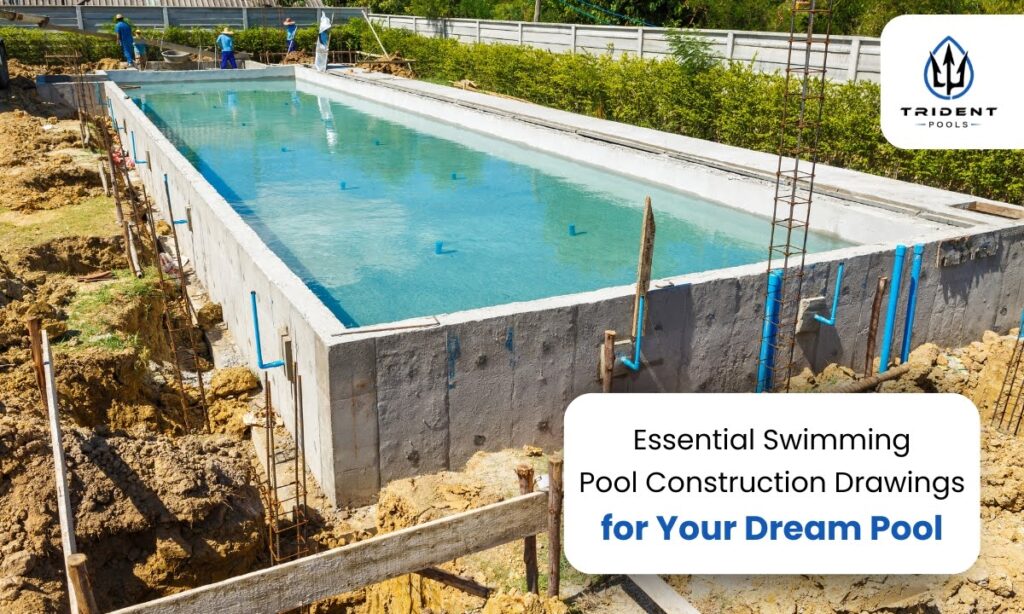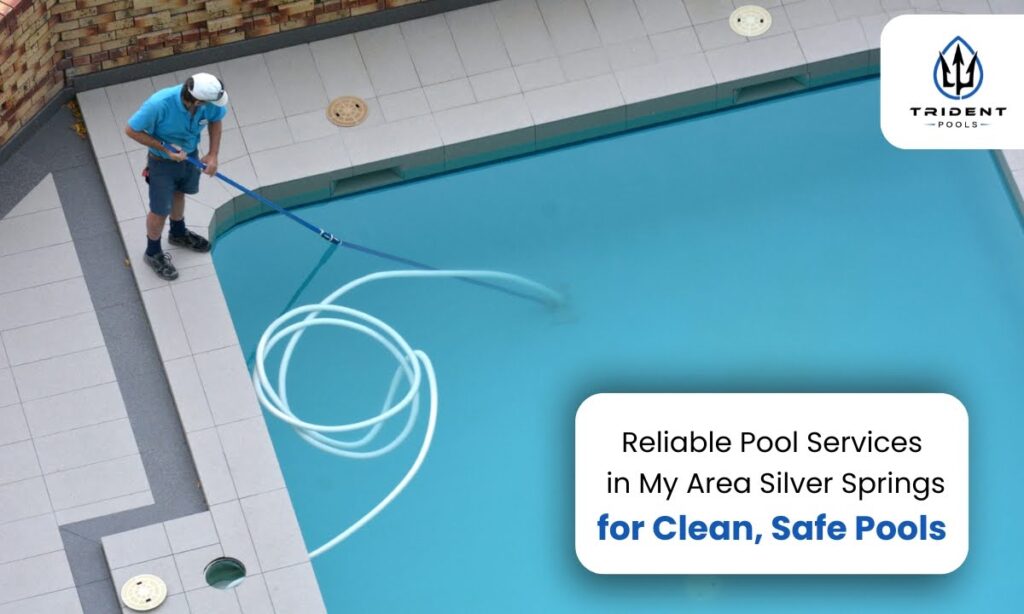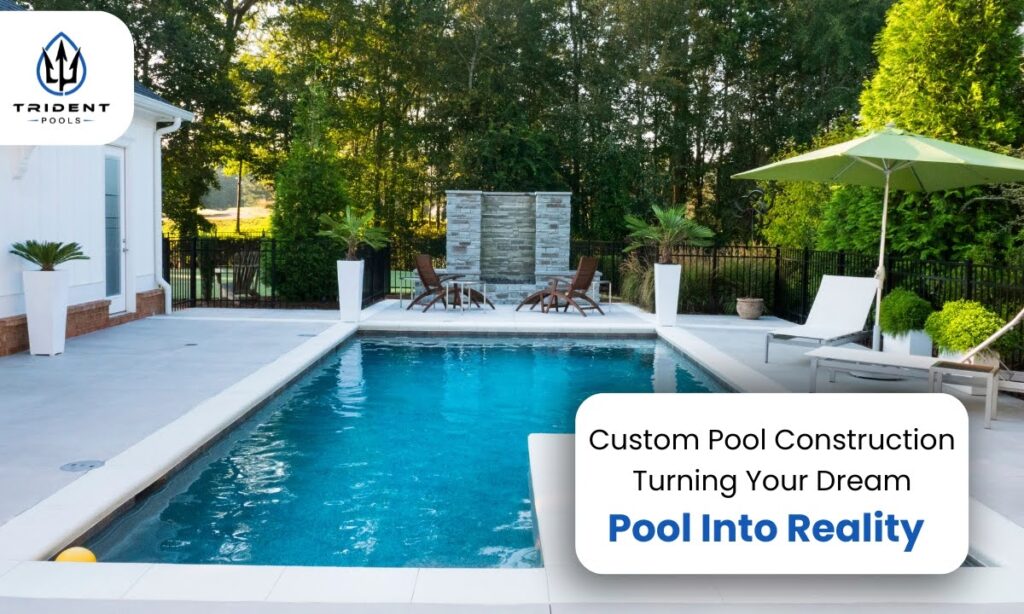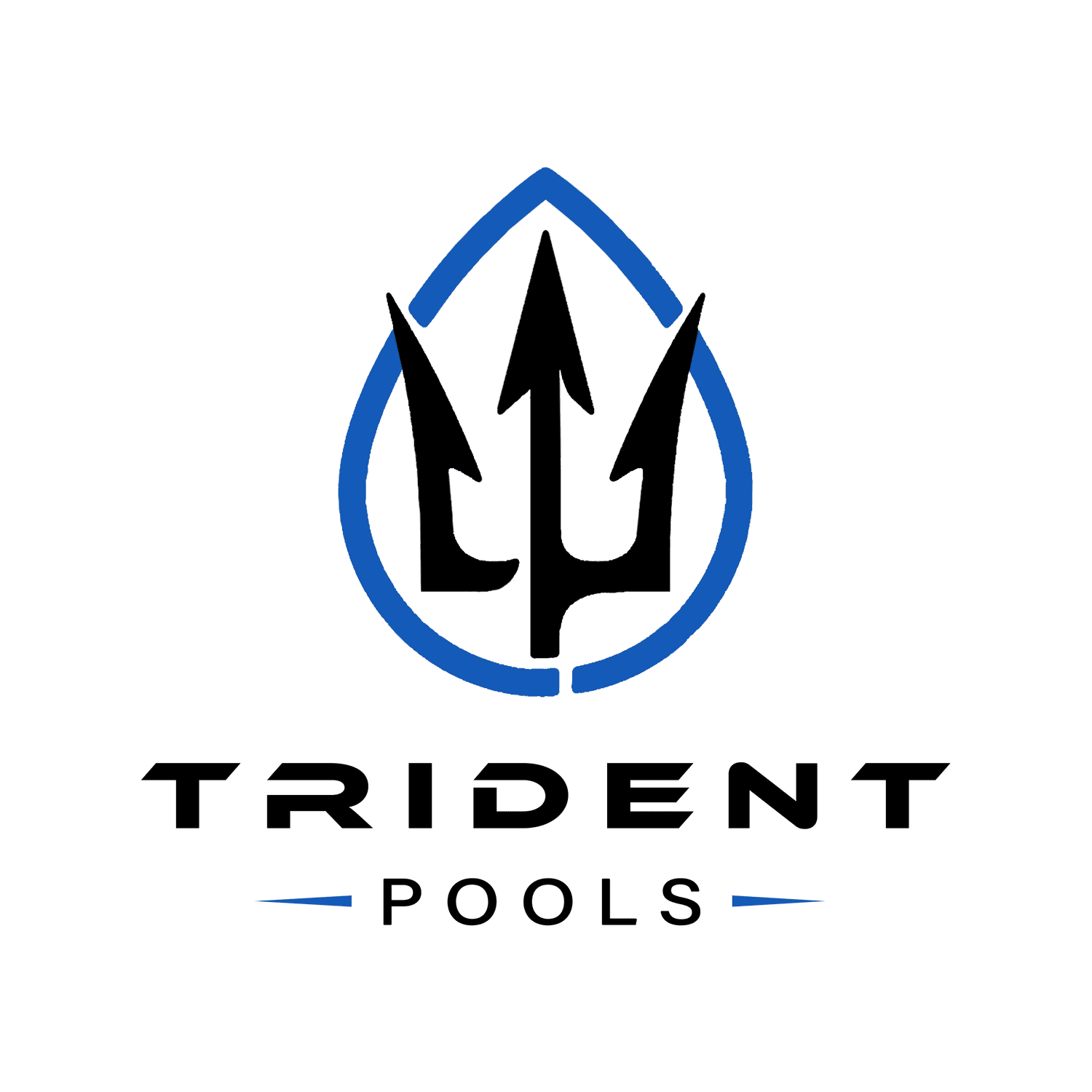
What Are the Most Common Types of Pool Care Chemicals and Their Functions?
Maintaining a pristine pool requires an understanding of the various pool care chemicals and their specific functions. These chemicals are essential for ensuring water clarity, safety, and balance. At Trident Pool Solution, we emphasize the importance of using the right chemicals in appropriate amounts to keep your pool in optimal condition. Here is an in-depth look at the most common pool care chemicals and their roles.
Pool care chemicals are integral in managing water quality, preventing algae growth, and providing a safe environment for swimmers. Each type of chemical serves a unique purpose and contributes to the overall maintenance of your pool. By regularly monitoring and adjusting chemical levels, you can prevent common pool problems and ensure a comfortable and clean swimming experience.
- Chlorine: The Primary Sanitizer
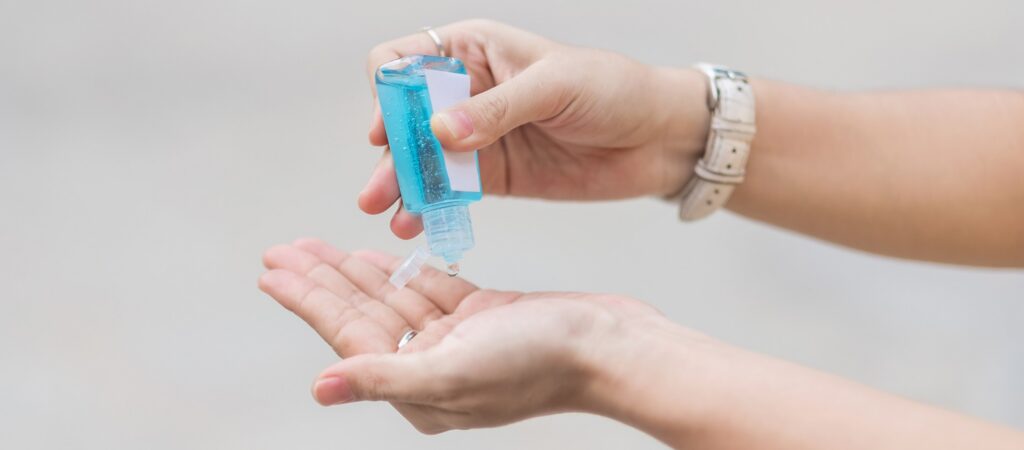
Chlorine is the cornerstone of pool sanitation. It acts as a powerful disinfectant, targeting and eliminating bacteria, viruses, and other harmful microorganisms. Chlorine helps maintain clean and safe water, which is crucial for a healthy swimming environment. Without proper chlorination, pools can become breeding grounds for pathogens.
Functions:
- Disinfects pool water by killing bacteria and viruses.
- Breaks down organic materials such as sweat, oils, and leaves.
- Prevents algae growth and maintains clear water.
Types:
- Liquid Chlorine: This fast-dissolving option is ideal for immediate adjustments and is effective for both initial treatment and regular maintenance.
- Granular Chlorine: Easy to use, granular chlorine is suitable for both startup and maintenance applications. It dissolves quickly and provides a potent dose of chlorine.
- Chlorine Tablets: Slow-dissolving tablets are convenient for continuous chlorination. They release chlorine gradually, ensuring a steady supply of disinfectant.
- pH Balancers: Maintaining Water Acidity

The pH level of your pool water affects the efficiency of chlorine and the comfort of swimmers. pH balancers are essential for maintaining water acidity within the optimal range, typically between 7.2 and 7.8. Proper pH balance helps ensure that chlorine works effectively and prevents problems such as eye irritation and skin discomfort.
Functions:
- Adjusts the pH level to prevent it from becoming too acidic or too alkaline.
- Enhances the effectiveness of chlorine and other sanitizers.
- Reduces the risk of scale formation and corrosion in pool equipment.
Types:
- pH Increasers: Used to raise the pH level if the water is too acidic, often caused by heavy rain or high usage.
- pH Decreasers: Used to lower the pH level if it is too alkaline, which can result from the use of hard water or alkaline chemicals.
- Alkalinity Adjusters: Stabilizing pH Levels
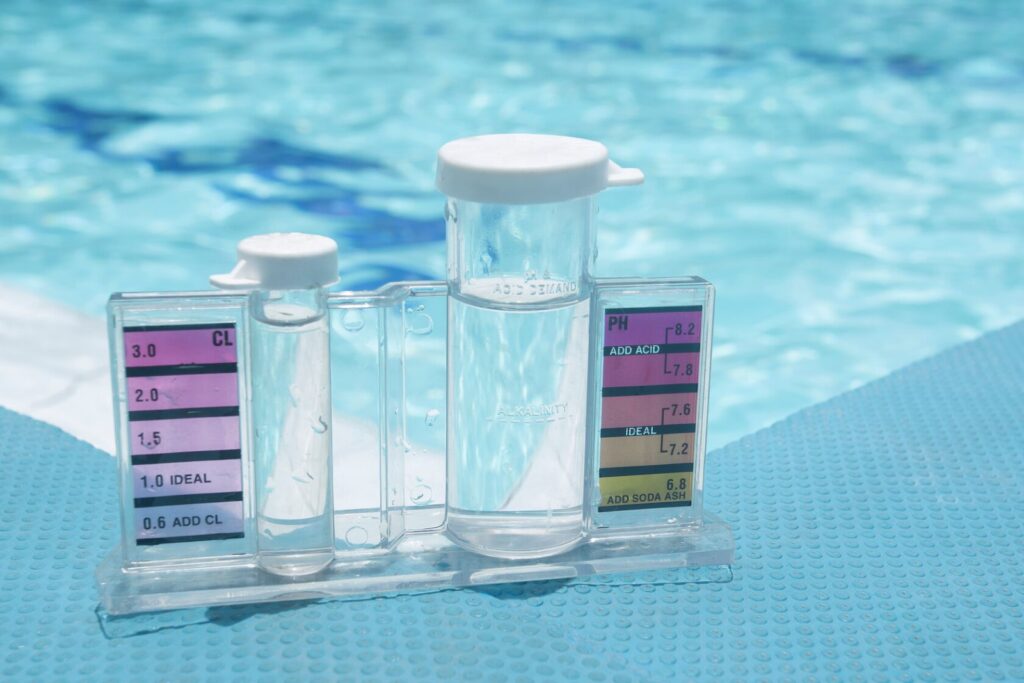
Total alkalinity acts as a buffer to prevent rapid changes in pH levels. Alkalinity adjusters are crucial for maintaining stable water chemistry, which helps in reducing the frequency of pH adjustments. Proper alkalinity ensures that the pH remains consistent, contributing to overall water balance and clarity.
Functions:
- Stabilizes pH levels to prevent sudden fluctuations.
- Enhances the performance of pH balancers and chlorine.
- Helps in preventing scaling and corrosion on pool surfaces and equipment.
Types:
- Alkalinity Increasers: Increase the total alkalinity of pool water, which is useful if the water becomes too acidic.
- Alkalinity Reducers: Lower the total alkalinity when it is excessively high, which can cause cloudiness and scaling.
- Algaecides: Preventing and Controlling Algae
Algae can cause various issues in your pool, including cloudy water, slippery surfaces, and unsightly green or yellow patches. Algaecides are specialized chemicals designed to prevent and control algae growth. Regular use of algaecides helps to keep your pool clean and prevents algae from becoming a significant problem.
Functions:
- Prevents algae growth and proliferation.
- Clears existing algae and improves water clarity.
- Reduces the frequency of mechanical cleaning and maintenance.
Types:
- Copper-Based Algaecides: Effective against a broad range of algae types, including green and black algae.
- Non-Copper-Based Algaecides: Suitable for regular use, less likely to cause staining, and effective against various algae types.
- Shock Treatments: Refreshing Pool Water
Shock treatments involve adding a high dose of chlorine or other oxidizing agents to break down contaminants and refresh the pool water. Shocking is essential after periods of heavy pool usage, rain, or when the water appears cloudy. Regular shock treatments help to maintain optimal water quality and prevent the buildup of contaminants.
Functions:
- Breaks down organic contaminants, including sweat, oils, and debris.
- Refreshes and revitalizes pool water to improve clarity and quality.
- Eliminates residual bacteria and enhances overall water sanitation.
Types:
- Calcium Hypochlorite: Commonly used for shock treatments, effective in various pool conditions, and provides a high chlorine concentration.
- Sodium Dichlor: Quick-dissolving and ideal for frequent shocking, especially in pools with stabilized chlorine levels.
- Clarifiers: Enhancing Water Clarity
Clarifiers work by causing small particles and debris in the pool water to clump together, making them easier to filter out. Using clarifiers helps to improve water clarity, making the pool look cleaner and more inviting. Regular use of clarifiers can reduce the frequency of deep cleaning and enhance the overall appearance of your pool.
Functions:
- Clears cloudy water by aggregating tiny particles for easier filtration.
- Improves water visibility and aesthetic appeal.
- Enhances the performance of the pool’s filtration system.
Types:
- Liquid Clarifiers: Easy to apply and suitable for routine maintenance. They are effective for clearing mild to moderate cloudiness.
- Powdered Clarifiers: Ideal for larger pools or more severe clarity issues, providing a potent dose of clarifying agents.
- Enzymes: Breaking Down Organic Contaminants
Enzyme-based products are designed to break down organic contaminants such as oils, lotions, and organic debris. Enzymes assist in maintaining clean water by reducing the buildup of organic materials, which can otherwise strain the filtration system and contribute to water quality problems.
Functions:
- Breaks down oils, lotions, and organic debris that can cause water quality issues.
- Reduces the workload on the pool’s filtration system.
- Maintains clean and clear water by minimizing organic contamination.
Types:
- Liquid Enzymes: Convenient for regular use, these products are easy to apply and effective in managing organic contaminants.
- Powdered Enzymes: Suitable for heavier contamination, providing a concentrated dose for more significant issues.
- Stain and Scale Removers: Addressing Deposits
Stain and scale removers are essential for addressing discoloration and buildup on pool surfaces. These chemicals help to maintain the aesthetic appeal of your pool and prevent long-term damage to surfaces and equipment. Regular use of stain and scale removers can help prolong the life of your pool and its components.
Functions:
- Removes stains caused by minerals, metals, and organic materials.
- Dissolves scale deposits that can accumulate on pool surfaces and equipment.
- Maintains the pool’s appearance and functionality, preventing damage.
Types:
- Stain Removers: Target mineral and organic stains, restoring the pool’s surface to its original condition.
- Scale Removers: Effective in dissolving calcium and other scale deposits, preventing buildup and damage.
